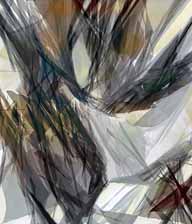People have always had trouble following their own mind rather than that of priests or gurus (pre- as well as post-socratic). The modern priests are the models that claim to be “based on research” but are nothing but cognitive furniture people push around in their mental space — instead of following and understanding their own movements-in-thought.
This ‘trending’ works against truth. To undo people’s submission to their own cognitive furniture, more than logical tools are needed …
The Dialectical Thought Form Framework (DTF) is a Set of Tools for Un-burying Your Movements-in-Thought.
- It is a set of learnable, cutting-edge reasoning tools that snap right on to the best thinking you are already using.
- It is geared to people who think strictly logically and are therefore often overwhelmed by the unforeseen ways in which the natural and social worlds work.
- It starts with your present level of thinking and shows you what might be MISSING from your thinking, and thus also from the world you construct for yourself at this time.
- It does so by directing your own and your teams’ attention to the STRUCTURE of your thinking which, in the end, produces all of its contents.
- In DTF, the structure of thinking is viewed as built out of thought forms (TFs) that form constellations (not of stars, but of interlocking ideas).
- Thought forms and their constellations can be cogently assessed through interview and given feedback on through dialog.
- In dialog, DTF users distinguish the untrammeled internal dialog of thinking for yourself from the external dialog engendered by speaking with others.
- Nothing can ever replace the ability of elucidating your internal dialog for yourself.
- Nothing can ever replace the internal dialog as the root of external dialog.
- DTF thought forms enable you to elucidate your own untrammeled internal dialog.
- As users of DTF, we are not persuading you to think differently.
- We only provide you with a set of tools for boosting the flexibility and holism of your cognitive potential.
- We thereby assist you in creating self-organization in yourself, and collaborative intelligence in your teams.
- For a user-manual of DTF, see Publications.
- For IDM blogs on the nature and use of DTF, and deep thinking generally, see Blog.
Bhaskar’s Four Moments of Dialectic (1993) Help Make Explicit The Mental Processes Required for Following O. Scharmer’s Theory U (which otherwise remains a mere utopia).
- In DTF, thinking means ‘conceiving of the real world in terms of four interrelated perspectives’ called the four moments of dialectic.
- These ‘moments’ are constituents of people’s cognitive process that is the foundation of their emotional life as well.
- DTF perspective-taking empowers interlocutors – individuals, team and board members – to critically listen to, and question, each others’ thinking about the real world in terms of the structure (not only the content) of their thinking.
When we think in terms of the Four Moments of Dialectic, we discover in logical flat-lands actionable worlds of risk and opportunity. This frees us to go for the hills and valleys instead …


1M-Context: The static factual world your logical thinking starts out with:
First Moment. The real world lacks a unitary cause and is highly stratified. Thinking errs when making the world flat, thereby de-stratifiying it.

2E-Process: The unceasing motion the real world is undergoing, both outside and inside yourself:
Second Edge. The real world is pervaded by absences (geographical shifts, loss, deaths, ills, breakdowns, etc.) Thinking errs if it denies them and paints the world purely positive, a logical thinking does.

3L-Relationship: The intrinsic relationship between the components that together make up the social and physical world: The real world is a totality of strongly interrelated, often incompatible, components. Thinking errs if it neglects interrelationships, thereby de-totalizing reality.
4D-Transformation: A perfect storm that is brewing (as indicated by the rain storm image on the outer left above): We can shield ourselves from the storm only by practicing transformational thinking. Such thinking is holistic, systemic, and remediative of logical fallacies. It is able to penetrate contexts, processes, and relationships as moments of its unfolding. Transformational thinking takes on the truth that the real world is in unceasing transformation but offers promising entry points for human action. Thinking errs if it is unable to capture transformation, thereby sabotaging human intervention as a natural cause embedded in natural causes.